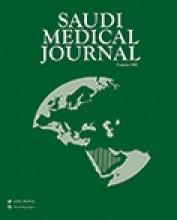Abstract
OBJECTIVES: To study the frequency of the chromosomal abnormality (CA), referred for karyotyping, and counseling in individuals with primary amenorrhea (PA) and secondary amenorrhea (SA).
METHODS: We report on a retrospective survey of 865 women with amenorrhea (620-PA and 245-SA) at the Division of Human Genetics, Department of Anatomy, St. John's Medical College, Bangalore, India from 1973 to 2005.
RESULTS: The frequency of the CA in amenorrhea was 23.35%, while PA was 26.13%, and SA was 16.33%. Numerical CA was prevalent in 45.54% of the total; 43.83% in PA, and 52.5% in SA. In numerical chromosomal abnormality, the observed karyotypes were: 45,X; 47,XXX; X mosaicism (45,X/46,XX; 45,XX/46,XX/47,XXX; 45,X/47,XXX; 46,XX/47,XXX); Y mosaicism (45,X/46,XY; 45,X/47,XYY); and others: 46,XX/47,XX+10; 46,XX/46,XY; 46,XX/47,XXY. In addition, is the presence of 46,XY female condition in 63 cases (31.19%), out of which 34.57% were detected to be associated with primary, and 17.5% with SA. Included in the structural chromosomal anomaly were: 46,X,i(Xq); reciprocal translocation [46,XX,t(9;14)]; Robertsonian translocation (13;14); X; autosomal translocations (X;12 and X;14); deletion/duplication/ fragment/isochromosome/marker/ring formation associated either with the long or the short arms of X chromosome; 46,XX,9q-; 46,XX/46,XX,3p(break); in a pure free status or mostly in mosaic status.
CONCLUSIONS: The present study has emphasized that karyotyping is one of the fundamental investigations in the evaluation of amenorrhea. It has highlighted CA, one of the genetic etiology as the causal factor in amenorrhea.
- Copyright: © Saudi Medical Journal
This is an open-access article distributed under the terms of the Creative Commons Attribution-Noncommercial-Share Alike 3.0 Unported, which permits unrestricted use, distribution, and reproduction in any medium, provided the original work is properly cited.






